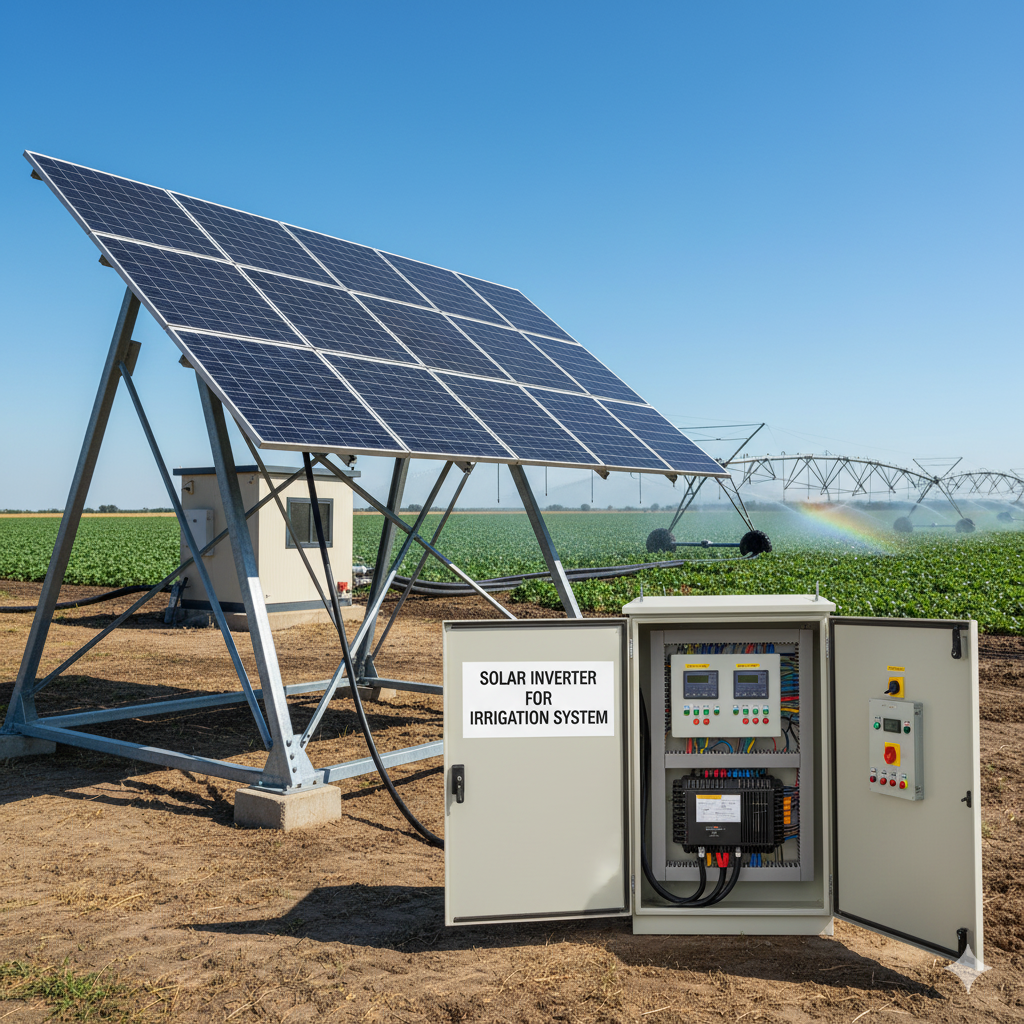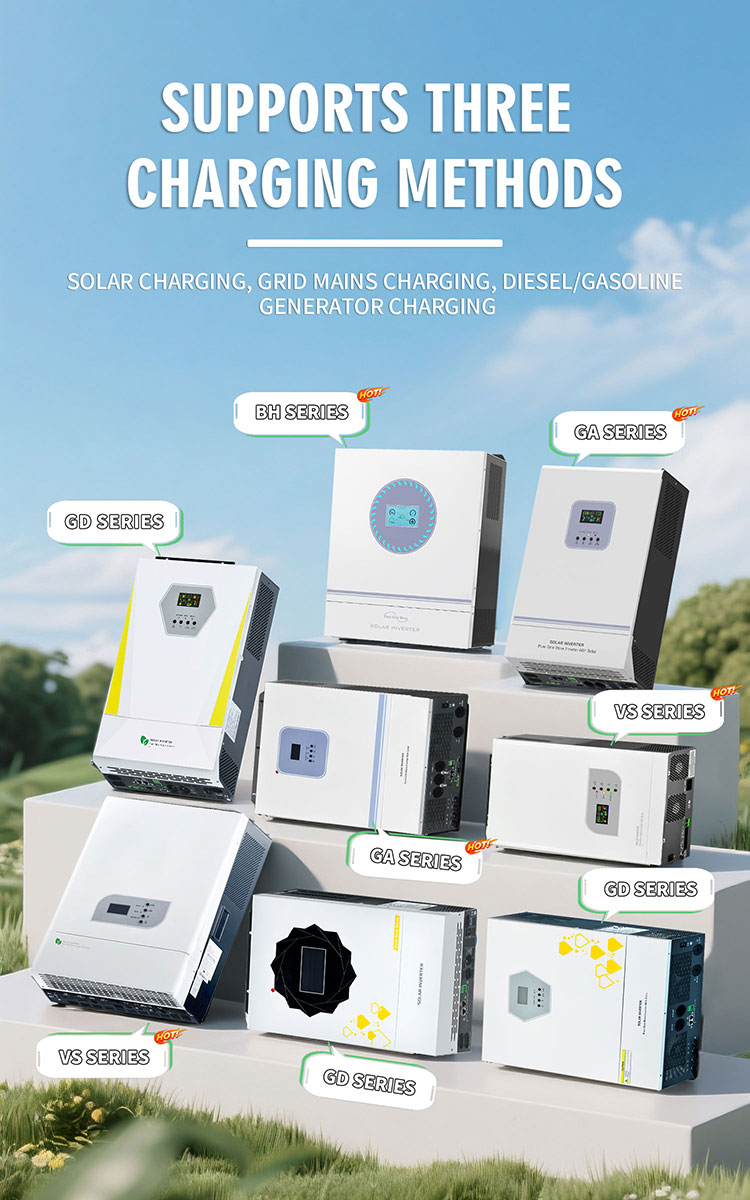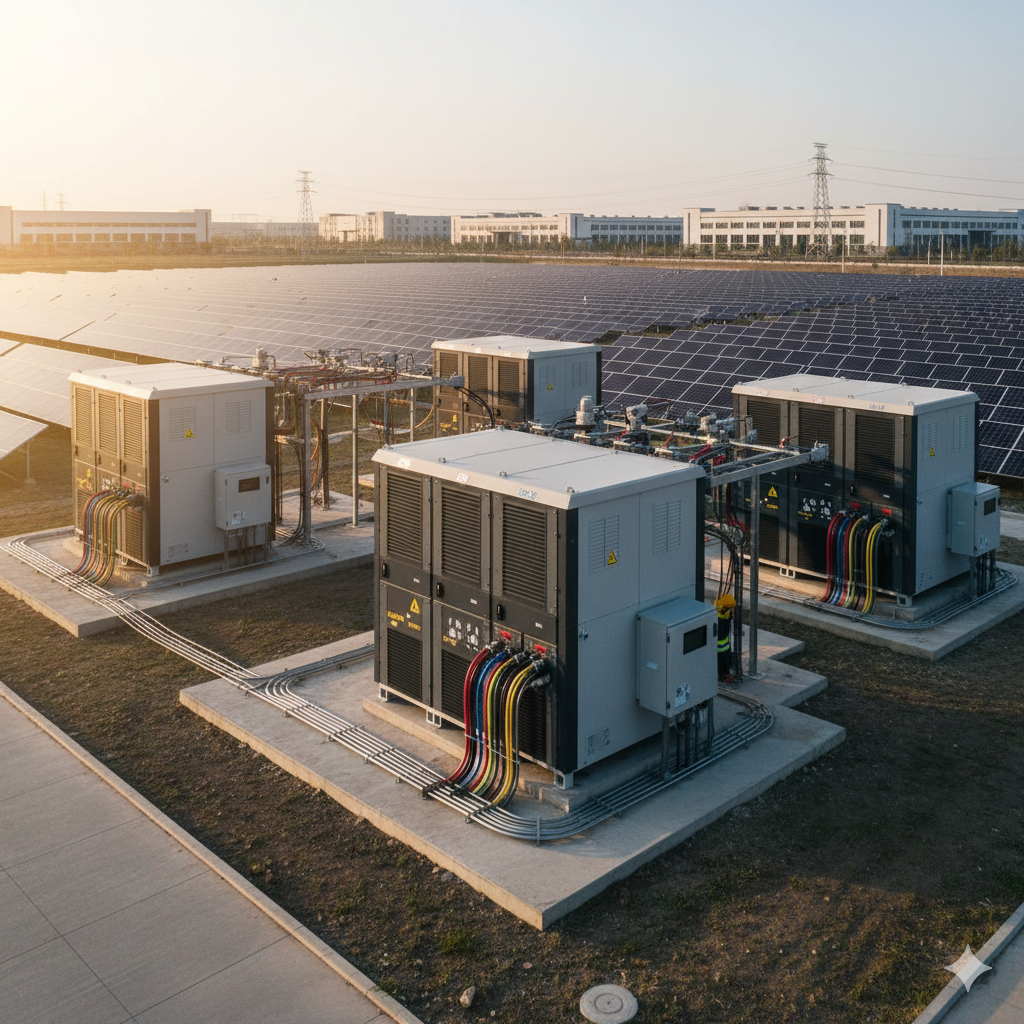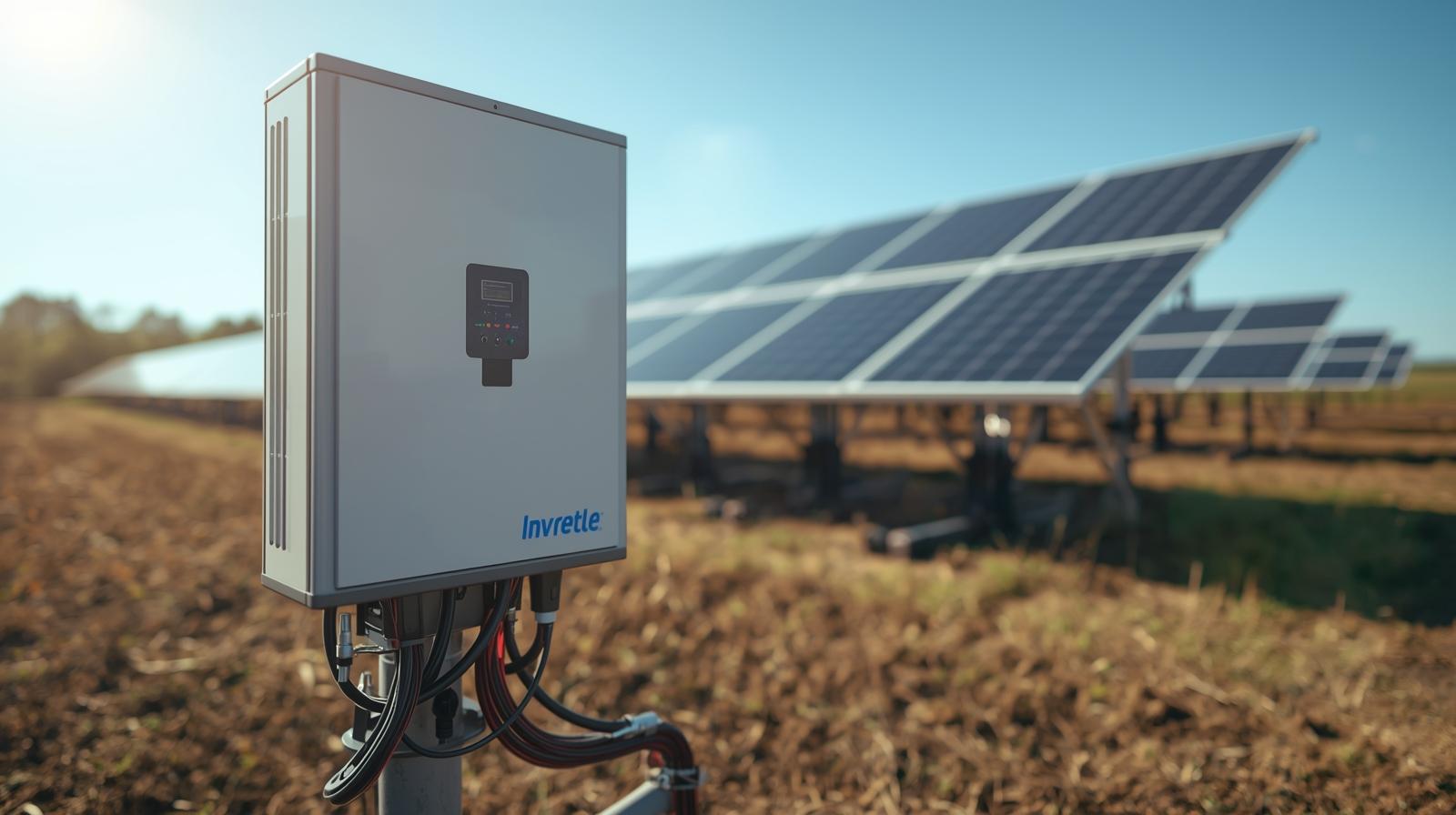
Rethinking Irrigation: When Energy Limits Growth
Across many agricultural regions, power supply determines how and when crops receive water. Grid failures, rising diesel prices, and long cable runs make traditional irrigation increasingly expensive and unpredictable.
A solar inverter for irrigation system directly addresses these problems by converting solar energy into usable AC power for pumps, motors, and control panels. By pairing panels with hybrid inverters and batteries, farms gain reliable energy — even in off-grid or low-voltage zones.
In short, the system transforms sunlight into continuous water flow, turning energy independence into better crop yield.
The Logic Behind Solar-Powered Irrigation
An irrigation system powered by solar inverters isn’t just about electricity generation — it’s about intelligent energy management.
| Component | Function | Impact on Irrigation |
|---|---|---|
| Solar Panels | Capture sunlight and generate DC power | Free, renewable energy source |
| Solar Inverter | Converts DC to AC and regulates load | Enables use of standard AC pumps |
| Battery Storage (optional) | Stores excess energy | Ensures irrigation during cloudy periods |
| Controller & Sensors | Monitor water flow, soil moisture | Optimize water usage and efficiency |
By integrating these elements, the inverter synchronizes energy delivery with irrigation demand, reducing waste and extending pump life.
This smart synchronization allows farmers to irrigate more precisely — watering crops when they need it most, not just when the grid allows.
Engineering Reliability: Features That Keep the Water Flowing
The solar inverter acts as the brain of the irrigation system, ensuring that every drop of energy becomes a drop of water.
Key engineering features include:
-
High MPPT Tracking Efficiency (up to 99%) — maximizes solar output even under partial shading.
-
Soft Start Function — prevents sudden load spikes, protecting pump motors from damage.
-
Hybrid Input Design — automatically switches between solar, grid, and battery modes.
-
IP65 Enclosure — dustproof and waterproof, suitable for outdoor and field conditions.
-
Smart Monitoring — allows farmers to track system status via mobile or web apps.
These functions ensure not only reliability but also long-term cost control by minimizing downtime and maintenance.
Comparing Power Sources: Solar vs. Diesel and Grid Energy
| Power Option | Energy Cost | Maintenance | Suitability | Emissions |
|---|---|---|---|---|
| Diesel Generator | High | Frequent | Remote areas | High CO₂ |
| Grid Electricity | Medium | Moderate | Limited rural access | Medium |
| Solar Inverter System | Low (after setup) | Minimal | Universal | Zero |
According to IRENA (2024), replacing diesel-powered irrigation with solar-hybrid systems can cut operational costs by 60–80% and reduce annual emissions by over 1.5 tons per system — a clear win for both the environment and farmers’ budgets.
Real-World Impact: Where Solar Irrigation Thrives
-
Desert Farming (Middle East & Africa)
-
Solar-hybrid inverters maintain constant water supply for drip systems under high heat.
-
Reduced diesel transport saves logistics cost.
-
-
Rice and Paddy Fields (Asia)
-
Stable inverter output prevents pump overheating in continuous-flow irrigation cycles.
-
Supports submersible and surface pump configurations.
-
-
Vineyards and Orchards (Europe & South America)
-
Smart control allows water scheduling based on soil moisture data.
-
Ensures sustainability compliance for export certification.
-
These examples demonstrate that solar inverters aren’t just energy tools — they’re productivity enablers for data-driven agriculture.
Choosing the Right Inverter for Your Irrigation Setup
Selecting an inverter isn’t about wattage alone — it’s about system balance, efficiency, and scalability.
| Farm Size | Recommended Inverter Capacity | Key Considerations |
|---|---|---|
| Small farms (1–3 pumps) | 3–6 kW | Compact hybrid inverter, simple setup |
| Medium farms | 6–12 kW | Multi-string MPPT for variable sunlight |
| Large irrigation projects | 15–30 kW | Three-phase industrial-grade inverter with remote monitoring |
| Off-grid areas | Hybrid inverter + battery | Stable power storage for night irrigation |
Tip: For areas with inconsistent sunlight, choose hybrid systems with built-in MPPT + grid assist, ensuring pumps never stop even under low solar input.
Frequently Asked Questions
Q1: Can solar inverters handle high-power irrigation pumps?
Yes, modern models support up to 30 kW loads and can drive submersible or surface pumps efficiently.
Q2: What happens during cloudy days?
Hybrid systems automatically switch to battery or grid mode to maintain constant water flow.
Q3: Is the system suitable for existing diesel setups?
Absolutely. Inverters can retrofit existing systems, allowing gradual transition to full solar operation.
Q4: How long is the ROI period?
Typically 3–5 years, depending on local sunlight and energy prices.
Water Security Meets Energy Independence
Solar-powered irrigation is transforming rural agriculture — delivering stability, affordability, and sustainability where it’s needed most. By integrating intelligent inverter systems, farms gain control over both energy and water, the two essentials of modern production.
At Thlinksolar, our inverter technology is engineered for tough field environments and high-efficiency irrigation. Whether you manage a small orchard or a multi-pump plantation, our hybrid solar solutions are built to sustain your growth for years to come.
To learn more, visit our homepage or reach out through our contact page.


